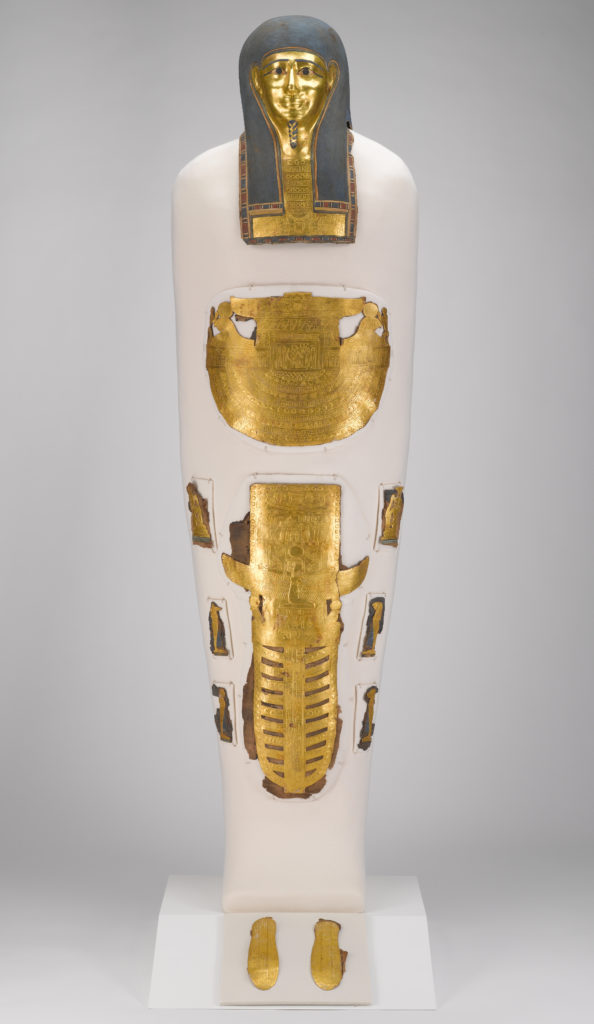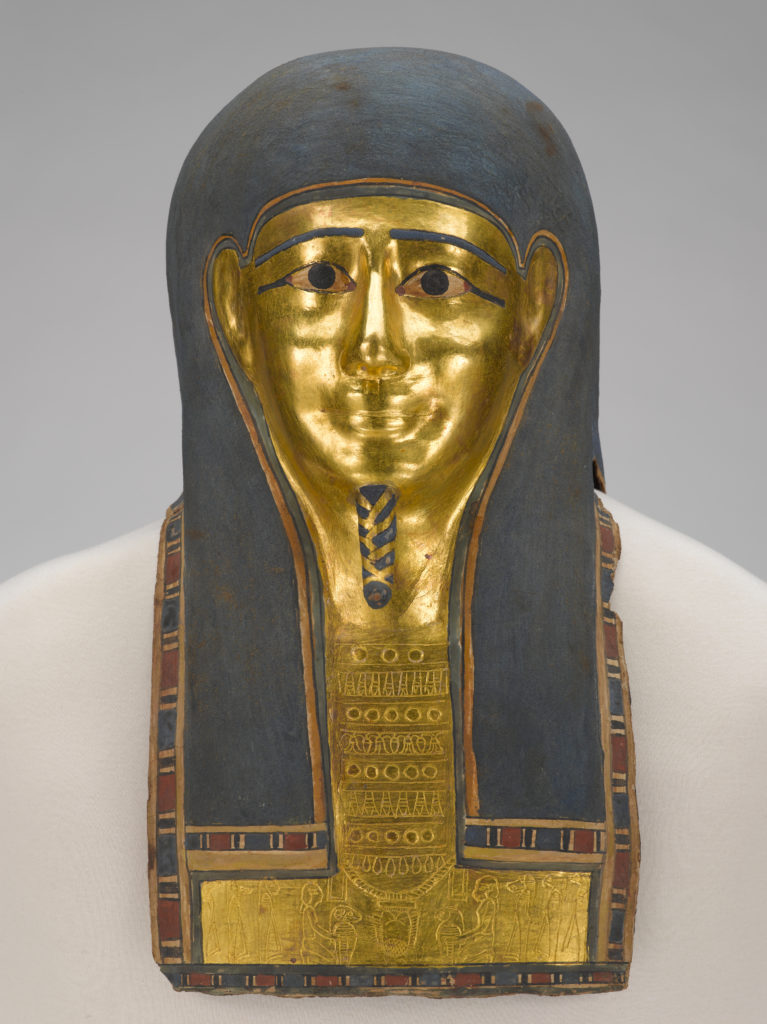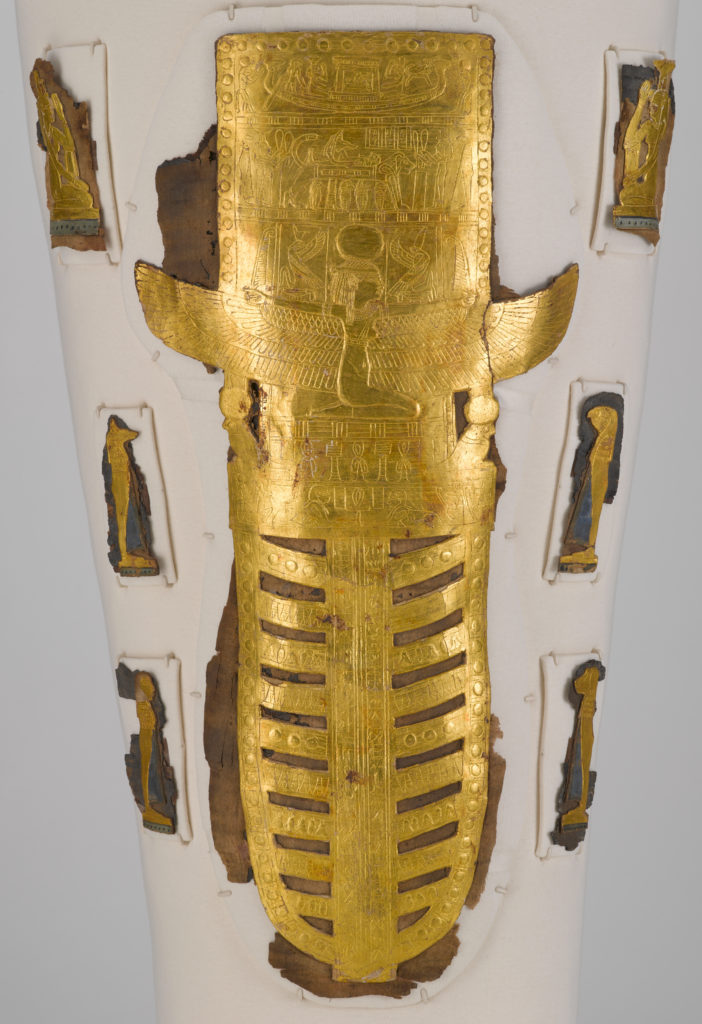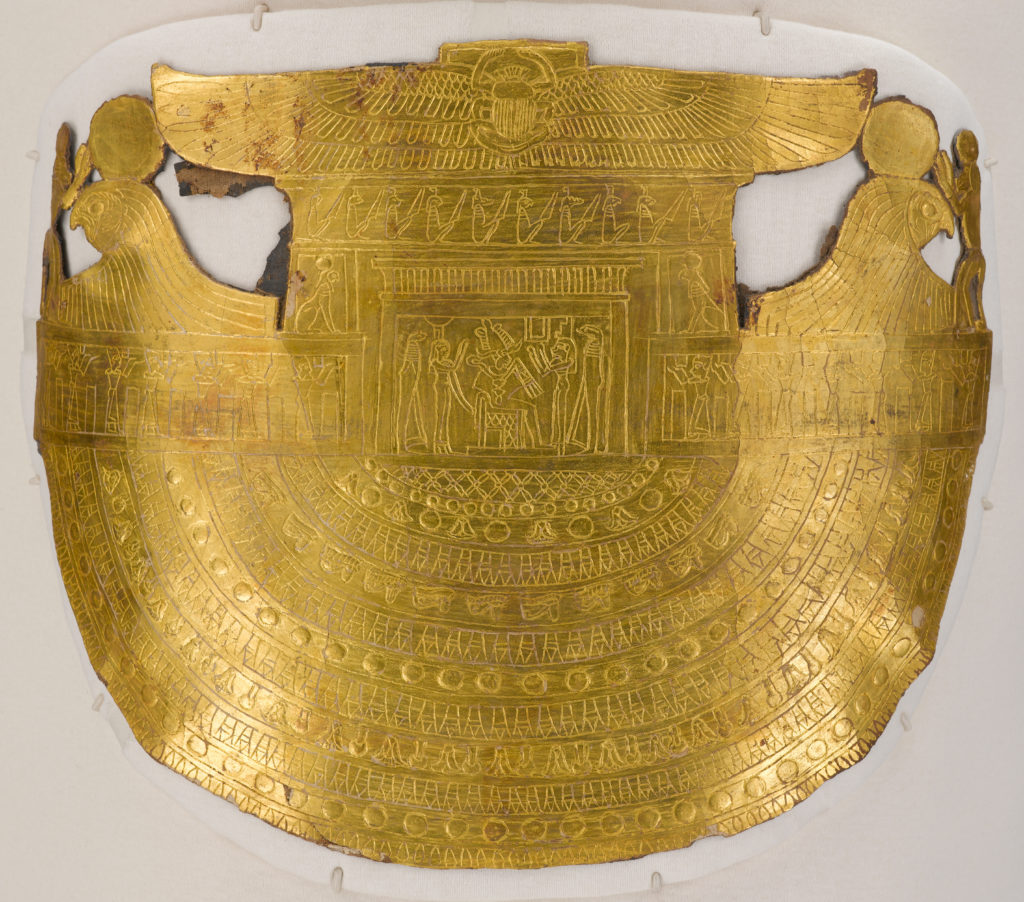Gilded Mummy Covering (work of art)
Información sobre la obra de arte
Ideas clave sobre esta obra de arte
- These are pieces of cartonnage, the top layer of a linen-wrapped mummy. In this cartonnage, linen is made stiff with glue, then covered with a thin layer of gold (gilding) and paint. Pieces include a funerary mask, breastplate, leg coverings, and golden soles for the bottom of the feet.
- Hieroglyphs and images, which are meant to give the deceased a good experience in the afterlife, are embossed or lightly marked on the gilding.
- Egyptians believed that using gold on mummies could help the deceased achieve eternal life.
- This cartonnage was made toward the beginning of the Greco-Roman period of Egyptian history, which began when Alexander the Great took control of Egypt from Persia in 332 B.C.E. This colonial period lasted until 330 C.E.
Más información
This cartonnage—linen stiffened with glue and covered with a thin coat of gilding—formed the top layer of the linen-wrapped mummy of the deceased. The lowest register of the funerary mask depicts the ceremony of the adoration of the heart, the organ regarded by the Egyptians as the seat of human emotions and intellect. The gold breastplate and leg coverings are embossed and incised with figures and scenes that ensure a happy afterlife for the deceased.
Two depictions of the falcon god Horus, shown with a sun disc on his head, protect the deceased. A winged scarab, the symbol of the daily rebirth of the sun, is depicted above a temple where Osiris is worshipped by his wife Isis and her sister Nepthys. Osiris was the god who oversaw the afterlife and resurrection. The goddess Nut, shown spreading her wings across the mummy’s legs, protects the deceased, whose funeral boat and burial can be seen above her. Isis and Nepthys are also depicted on the sides of the legs, along with the four sons of Horus. The golden soles of the mummy’s feet prevented the deceased from coming in direct contact with the ground and bringing dirt or impurities into the home of Osiris. The wrapped and covered mummy would have been placed inside a mummiform, or mummy-shaped, coffin.
Recursos adicionales
Recursos para educadores
- Watch this webinar to learn more about the Greco-Roman period of Egyptian history.
- Read more about gold in ancient Egypt.
Recursos para los estudiantes




